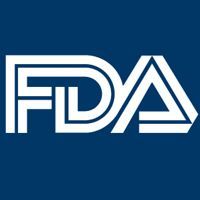Article
Study: Consumer ads prompt men to seek TRT
Findings of an ecologic study indicate that direct-to-consumer advertising for testosterone therapy influenced men to seek treatment and was accompanied by increased testosterone prescribing, including initiation in men without clear indications for use.
Findings of an ecologic study indicate that direct-to-consumer (DTC) advertising for testosterone therapy influenced men to seek treatment and was accompanied by increased testosterone prescribing, including initiation in men without clear indications for use.
The study, which was published in JAMA (2017; 317:1159-66), analyzed associations between exposure to testosterone-related advertising in the 75 largest designated market areas representing metropolitan regions throughout the United States during the years 2009 to 2013 and new serum testosterone testing, initiation of any testosterone treatment, initiation of treatment by brand, and initiation in the absence of recent serum testosterone testing.
The results showed increases in non-branded, condition-awareness (low testosterone) and brand-specific DTC advertising during the study period that were associated with increases in all outcome measures.
Read - TRT and heart health: Conflicting findings published
“There continues to be ongoing debate about the appropriateness of direct-to-consumer advertising for prescription pharmaceuticals in the United States. The findings of our study suggest that advertising may be associated with increased use of medications and potentially inappropriate use,” said lead author J. Bradley Layton, PhD, research assistant professor of epidemiology at the University of North Carolina at Chapel Hill.
“While specific patient requests can influence treatment and prescribing behavior, the necessity, appropriateness, and risk/benefit tradeoff of testosterone treatment need to be carefully considered before initiating treatment.
“The recent publication of several clinical trials exploring testosterone’s effects on individual symptoms should be very helpful in addressing whether testosterone treatment will yield the benefits many men are looking for,” Dr. Layton added.
Based on review of commercial insurance claims, the study identified just over one million men in the 75 designated market areas aged ≥18 years who had a new serum testosterone test and 283,317 who initiated testosterone treatment, of whom 83,554 had treatment initiation without recent serum testosterone testing. Testosterone gels (59%) and in-office injections (36%) accounted for most of the treatment initiations.
Next: Ad exposures lead to increased testing
Ad exposures lead to increased testing
During the overall study period, each exposure to a testosterone advertisement was associated with a monthly relative increase of 0.6% in new testosterone testing, 0.7% in treatment initiation, and 0.8% in initiation without a recent testosterone serum measurement.
Each exposure to an advertisement was associated with 14 new serum testosterone tests, five new treatment initiations, and two initiations without testing per 1 million men exposed.
Also see - Testosterone therapy's big week: One urologist's perspective
The study found differences in the impact of non-branded and branded advertising. Until 2011, a single branded gel testosterone product was commercially available, and its manufacturer primarily aired non-branded ads to raise awareness about signs and symptoms of low testosterone. After a second gel product gained marketing approval, the non-branded ads were phased out in preference for brand-specific ads.
Analyses of data for the years 2009 through 2011 showed statistically significant associations between increased advertising and increases in testosterone testing and initiation of treatment, but these associations were absent when data were analyzed for the years 2012 and 2013.
“It would be very interesting to analyze whether physician prescribing behavior varied by medical specialty. Unfortunately, we did not have access to the information,” Dr. Layton told Urology Times.
More from Urology Times:
New Products: Nasal spray to treat nocturia receives FDA approval
MACRA: A practical perspective for urologists
Guarded approval for new USPSTF PSA grade
Subscribe to Urology Times to get monthly news from the leading news source for urologists.





